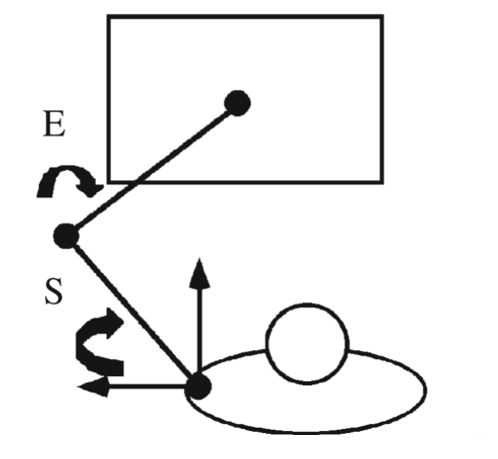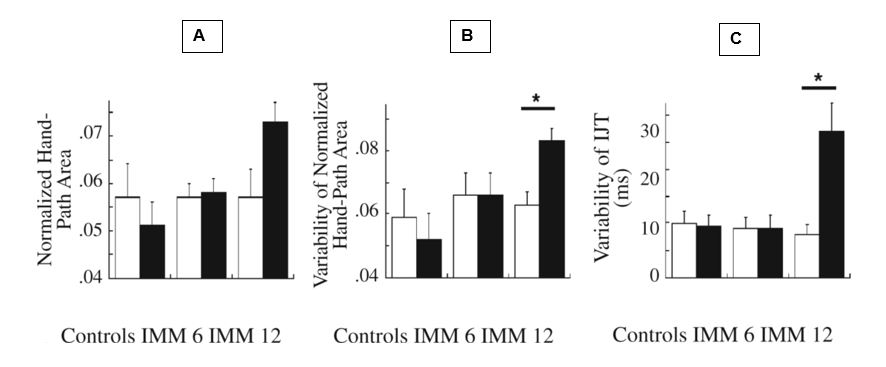Short term limb immobilization affects motor performance
Many studies have shown the negative effects of immobilisation regarding the ability to properly imagine, perform and control a movement. IVS3 allows to focus the training on the mental representation to maintain the limb awareness and to fight against the negative effects of immobilisation.
IVS3 approach : Maintain a proper mental representation even during immobilisation
Immobilisation protocol is common in case of complex trauma and especially in fracture reduction. Numerous studies have demonstrated the negative effects of an immobilisation protocol on the cortical activation as well as on the quality and efficiency of the motor command for healthy subjects. Then some tools need to be proposed to decrease these harmful effects and to improve patient recovery prognosis. Beyond this trauma and orthopaedic angle, it is important to note the strong similarities between a non-use phenomenon in neurologic diseases and a long-term effect of immobilisation.
Using IVS3 device during a mechanical immobilisation or a non-use behaviour allows the patient to train and maintain a mental representation of the affected limb thanks to the visual feedback on the screen. This kind of visuomotor simulation training activates the cortical networks which are involved in the vision of movement but also in the motor performance. To prevent the harmful effects due to immobilisation, this approach should be applied to the patient as acute as possible to stimulate brain plasticity and to maximize the next rehabilitation steps.
Moisello et al. (2008) assessed the effects of a short-term immobilisation (6h/12h) on the voluntary motor performance in healthy subjects by analysing the upper limb inter-joints coordination regarding a reaching task. Although the quality of proprioceptive input treatment is preserved for the motor control during action performance, a short-term immobilisation, could lead to a decrease in the mental representation of the immobilized limb and have an impact on motor planning (feedforward model).
Target reaching and motor coordination
3 groups are included to assess the effect of short-term immobilisation :
- Group A : immobilisation of the left arm for 12 hours
- Group B : immobilisation of the left arm for 6 hours
- Group C : Control group – no immobilisation
Healthy participants (n=46, right-handed) are installed in front of a table on which a computer gives the reaching instructions. They are asked to reach and point quickly these targets many times. These movement series can be performed:
- In a condition where they can visualise the target on the table (visual feedback)
- In a condition where the target disappears (no visual feedback)

FIGURE 1.
Shoulder (S) and elbow (E) angles at beginning of each block. When movement onset was located in the center of the tablet, the angles measured 45° and 90°, respectively
.

FIGURE 2.
(A) Mean normalized hand-path area for the three groups at baseline (open bars) and at test (closed bar). At test, mean normalized area slightly decreased in controls and increased slightly after 6 hr of immobilization (IMM 6 group) and consistently after 12 hr (IMM 12 group). (B) Variability of normalized hand-path area across the three target directions (standard deviation of the mean). That parameter significantly increased at test only after 12 hr of immobilization. (C) Variability of interjoint timing (IJT) increased after 12 hr of immobilization.
A central control of movement distortion
The Inter-joint coordination and the reaching trajectory is accurate and easily replicable in the visual feedback condition. When the target disappears, movement production is less replicable, slightly hypermetric with light trajectory mistakes. The data analysis highlighted a significant difference regarding the total length done by the hand and variability in the 12 hours immobilisation condition (+27,9% ; +32,5%). In addition, authors put into light an inter-joint desynchronisation (IJT) after 12 hours.
So, motor performance of participants shows an increase in the length crossed by the hand and a decrease of motor efficiency in the 12 hours condition although no statistical difference is measured on the 6 hours condition. Changes which have been observed are the result of the mental representation disturbances of the immobilised limb and could be also linked with the decrease in the cortical activity.
The results of this study put in light that feedforward models play a key role in action planning, motor control, inter-joint synchronisation, and motor performance.
In an other study from Huber & al. (2006), the authors actually showed a cortical activity modifications after a 12 hours of immobilisation with Motor Evoqued Potential diminution (MEP). This confirms the immobilisation protocol and the non-use effects on cortical activity. Other recent studies confirm this result and specify in addition that there is no modification or any distortion on the spinal or peripherical areas.
Abstract
C. Ghez, J. Gordon, and M. F. Ghilardi (1995; J. Gordon, M. F. Ghilardi, & C. Ghez, 1995; R. L. Sainburg, M. F. Ghilardi, H. Poizner, & C. Ghez, 1995) have found that proprioceptive deafferentation impairs feedforward and feedback mechanisms that control reaching movements. In the present study, the authors found immobilization-induced changes in limb kinematics, including joint motion, in 32 healthy participants who performed out-and-back movements before and after 0, 6, or 12 hr of immobilization of the left arm. Control participants did not undergo the arm immobilization procedure. Immobilization for 12 hr, but not 6 hr, caused trajectories with increased hand-path areas and altered interjoint coordination. The abnormalities were smaller in amplitude but similar in quality to those reported in deafferented patients (R. L. Sainburg et al.). In addition, movement onset point significantly drifted after immobilization. Thus, short-term limb disuse can affect interjoint coordination by acting on feedforward mechanisms. These behavioral alterations are potentially related to cortical plastic changes.
Moisello, C., Bove, M., Huber, R., Abbruzzese, G., Battaglia, F., Tononi, G., & Ghilardi, M. F. (2008). Short-Term Limb Immobilization Affects Motor Performance. Journal of motor behavior, 40(2), 165‑176. https://doi.org/10.3200/JMBR.40.2.165-176
Keywords
Immobilization, Interjoint Coordination, Kinematics, Plasticity, Proprioception